Art history Maya and Olmec
1/10
There's no tags or description
Looks like no tags are added yet.
Name | Mastery | Learn | Test | Matching | Spaced |
|---|
No study sessions yet.
11 Terms
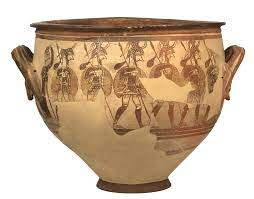
Warrior Vase (krater)
-Krater= type of vase used for mixing wine and water
Mycenae Greece/ 1300 BCE
Pottery= first narrative ceramic imagery
Soliders marching off to battle
Composite viewpoint
Pottery detail depends on the event
No indication of the natural world
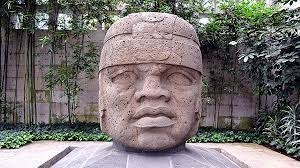
Colossal head from San Lorenzo
1200-900 BCE
- 13 tons of basalthead 8 of 17 total
stone transported down the river
facial features were individualized
feathers acrossed headdress
stone tools to carve
first large scale sculpture in mesoamerica
sense of naturalism
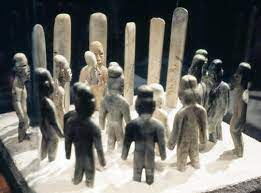
Offering 4
north plaza/ 900-400 BCE
21 sculptures made of greenstone, one granite, one schistose
thirteen figured are greenish serpentine
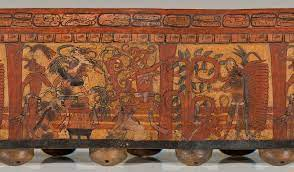
Chocolate Vessel
Maya/ 600-900 CE
Ceramic 8 inches
Scene involes a ruler and his court
Vessel probably used for choclate drink- not just decoration
owner was an artist and a ball player
painted before firing- makes it more durable
important as objects that are both used and gifted, ritual feasting, cultural significane
heavily adorned
maya glyphs- combining text and images
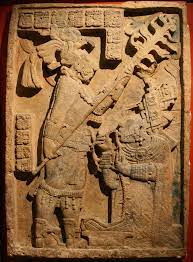
Maya rulers/ Yaxchilan lintel 24
Yaxchilan Mexico/ 725 CE
Set above a doorway
placed at the base of phyramids
series of three panals
scene represents a bloodletting ritual performed by the king and his wife
queen pulls thorny rope through tongue
ritual demonstrates her physical strength and connection to the gods
king holds the burning spear
sacrifice mirrors maya story of creation
both are elaborately dressed
glyphs mention exact date and location (Oct 24 709 CE)
communicated power to the public
public stone monuments were crucial to social and political cohesion
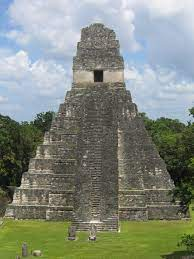
Temple 1
Tikal Guatemala/ 734 CE
Man made sacred mountains
connected to ruling family and patron deities
echo mountain landscapes
largest pyramid in the center of the city
temple contains space for sacred rituals
temple is topped by a large stone adn stucco roof comb
stairs were for elite groups
people would gather at the bottom
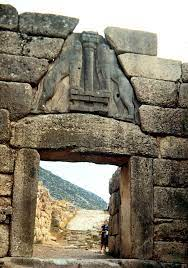
Lion gate
Mycenae Greece/ Thirteenth century BCE
corbelled arch and post lintel and relieving triangle
cyclopean masonry
minoan style column between animals
lion or composite creatures
earliest monumental sculpture in Greece
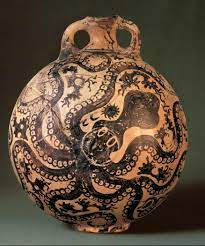
Marine style octopus flask
Crete Greece
1500-1450 BCE
ceramic height 11 inches
hold a valueable liquid
made in two pieces, then a handle and base added
from palaikastro
painted with a dark clay slip
ceramic- one of the most importatn aspects of Minoan culture
marine style pottery- decorative elements based on the sea
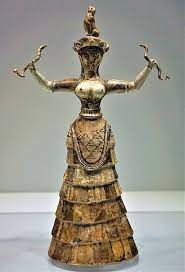
Snake goddess
Crete Greece/ 1600 BCE
discovered by sir arthur evans at knossos
found in a pit- purpose is unknown
left arm and head were missing
ceremonial guard- skirt with apron (cat on head)
tiny waist, woman are white, men are red, long black hair
naturalistic and movement
made of faience
goddess? elite woman?

Toreador fresco
From the palace at Knossos
Crete Greece/ 1400 BCE
most famous work of art from Crete
bulls were sacred in Minoan culture
part of a larger series of images
typical stylistic traits of minoan art
elongated fomrs, typical gender color, long black hair, sense of movement, naturalism

Mask of Agamemnon (gold death mask)
Mycenae Greece/ Grave circle A
1550-1500 BCE
hammered gold
one of 6 found in grave cirlce A
had individualized features
tied to the head